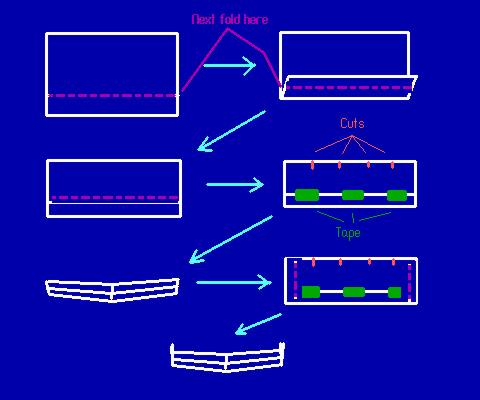|
Flight Test a "Stealth Bomber"
Most aircraft use vertical surfaces,
stabilizers or rudders, to guide the airplane and keep it flying straight.
A few special purpose planes, like the B-2 stealth bomber, don't use these
vertical fins. The B-2 bomber, a radar evading stealth plane, was built as
a giant "flying wing" to minimize the surfaces it had that might return a
radar signal. It pays a price for this and a sophisticated computer system
is required to control the B-2 and keep it stable in flight. You can build
your own "flying wing" paper airplane and see how well it flies with and
without vertical fins.
Step 1: Get a 8 1/2 by 11 inch
sheet of paper and make a fold two inches from the long bottom edge. When
you finish the folded paper should be 6 1/2 by 11.
Step 2: Holding the paper so that
the 2 inch wide section is toward you, fold the paper again right down the
middle of the 2 inch section. Now the folded section is only one inch wide
and 4 layers deep. Fold it again at the top of the inch high section. That
section should now be 5 layers deep. Take three pieces of tape and tape
this folded section down to the rest of the paper. The taped side will be
the top of the wing.
Step 3: Make four cuts equally
spaced along the long edge of the paper away from the folded section. The
cuts should go in about a 1/2 inch from the edge. This makes two control
flaps on the back of the wing. Fold the two control flaps up toward the
top of the wing.
Step 4: Give the wing a bend (not
fold) in the centre running from the folded front edge of the wing to the
back edge between the control surfaces. Bend the wing so that the outer
edges are up and the middle lower down.
Step 5: You can now test your
wing. Launch it by gripping from the back with your thumb under the bottom
of the bend and your forefinger on the top. Then give it a gentle push.
Adjust the flaps up or down to give it a better flight.
Step 6: Now see how a vertical
fins will make the wing fly a little bit better. Fold the left and right
edges, about an inch inward of the wing, up at a 90 degree angle and try
another flight.

|